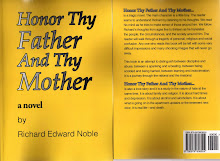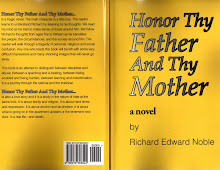
Sherman, Clayton, Norris-LaGuardia
Striking America
By Richard E. Noble
The notion that business had gotten too big for it britches was no longer a notion. Everyone knew about the power of the trusts and the super-wealthy. The Pujo Committee of 1913 had established the links of consolidation in business and finance in the U.S. The finances of the entire nation were proven to have been consolidated into the hands of a few. No one liked the idea. Every president from Grover Cleveland on, had jawboned about the horrible state of affairs. Teddy Roosevelt was even labeled as "the Trust Buster". But as early as 1888, committees in the Benjamin Harrison administration were investigating monopolies. In 1890, the Sherman Anti-trust Act was passed in response to public opinion. The Act prohibited conspiracies in restraint of trade among the several states. America had been a country based on competition. Competition was considered good. The elimination of competition via monopolies, trust, and other such evolutions was bad. To gain wealth was good. But to become so wealthy and so powerful that all competition could be stifled was bad, but, what to do, what to do? The Sherman Anti-trust Act of 1890 was the government's first attempt to do something.
The Sherman Act sat around rather idle and difficult until 1894 when, ironically enough, it was put to use against workers and not business monopolies or trusts. It was in the Pullman strike that the Sherman Act was brought into play. On the few occasions where it had been brought against business, it was dismissed or interpreted to the advantage of business trusts and monopolies. It was only when it faced labor unions that it developed a legal significance.
In the Pullman strike, the strikers and their sympathetic associates who cooperated against Mr. Pullman in other states were declared to be a labor monopoly. Their actions in refusing to handle Pullman cars at different railroad stations were declared to be in restraint of trade. An injunction was ordered and the Pullman strike was deemed illegal. Eugene Debs, union leader, refused to comply with the injunction. He was arrested and tried for contempt of court. He was convicted.
In the Danbury Hatter's case of 1908 the financial penalty of the Act was imposed. The Union involved was ordered to pay triple the claimed damages. Used in this manner, the Sherman Anti-trust Act could break the back of any union declared to be in violation.
In retrospect, it becomes rather apparent that the Sherman Anti-trust Act was passed purely as a placebo to placate public outrage. The government was controlled and operated by big business, as was everything else. The only thing that remains in question, is whether or not the legislature passed the Act, worded so obscurely, with the intention of using it in the future as an anti-labor initiative. If the act was passed sincerely by the legislature, then we clearly become aware of the peril of a judicial system where individual judges have the option not to read the intent of the law but the letter of the law, or to interpret law as they see fit. The only option to this behavior in a democratic society seemed to be that laws would have to be written in the future with a good deal more attention paid to specifics and details.
In 1914, Congress, again supported by strong public opinion, went back to the drawing board. An attempt was made to refine the Sherman Act and exempt labor unions from its anti-trust provisions. The Clayton Act was passed. Labor hailed the Clayton act as the Magna Carta of labor-management relations. This was not quite the case. In fact, conservative or anti-labor judges throughout the country saw the Clayton Act as basically synonymous with the Sherman Act.
So, in the beginning, laborers were not allowed to join together for any other than fraternal purposes. They could not "conspire" to better their working conditions, increase their wages, or damage or interrupt their employer's business. As time progressed laborers were able to combine and to petition their bosses peacefully. But if their peaceful petitions were rejected by their bosses, their only recourse was to quit and seek new employment.
Of course, we have no cases where bosses were restricted from joining together for their mutual business benefit. We have no cases where bosses are brought to trial for restricting the opportunities or wages of laborers. We have no cases where any management group is accused of manipulating prices or conspiring to raise prices. Nor do we find any cases of bosses working together against the rights of their workers. Up until this point we have what seems to be very much a one way street. All men are created equal. But, of course, bosses are more equal. The question still remained as to what were the rights of labor? What could laborers do in response to perceived injustice on the part of their bosses? Picketing was not permitted; boycotts were not permitted; sympathy strikes were not permitted; sit-downs were not permitted; work stoppage and slowdowns were not permitted; interfering with another man's opportunity to go to work in a striker's position was not permitted and the courts were obviously prejudiced towards management.
Workers could quit or take action and go to jail. Workers had, of course, taken action, and they were beaten, clubbed, put in jail or machine gunned in the streets. But by 1932, with the election of Franklin D. Roosevelt the tide began to turn ever so slightly.
The Norris-LaGuardia Act was called the anti-injunction act. The injunction had become a legal tool of management that was used to the point of abuse. An injunction could be issued without the consent of both disputants. An injunction could be issued simply on the word of management. A judge could issue a stop strike order without even hearing the side of the strikers. If the strikers then refused to comply, troops could be called in, and as we have seen, usually were. With the Norris-LaGuardia act the legislature got specific. Half the bill imposed restrictions on the manner in which the federal courts might grant injunctions. The remaining half of the bill dealt with the subject matter of an injunction.
The bill reviewed old injustices and attempted to correct them. It seemed to be an attempt to put unions on an equal footing with corporations. Picketing seemed to be legal under the statute. Unions could restrain trade, just as corporations could, as long as they acted "reasonably," - no fraud or violence was permitted. Violence was always a problem. Violence could be initiated by both sides and who would know or be capable of determining the true aggressor.
With the election of Roosevelt, the passing of the Norris-LaGuardia Act, and the appointment of new pro-labor judges, labor found a new freedom, and they took advantage of it. The moral of the story seems to be that judges may be even more important than the law or the legislatures.
From 1931 to 1939 things went pretty much in labor's direction. But, by 1939, pubic opinion was swinging back once again. Labor organizing tactics, sympathetic support, sit-down strikes, property damage and violence against industry and non-union workers took its toll on public opinion. States began to reconsider Norris-LaGuardia and make qualifying legislation of their own. By 1941, the unions had been calmed down, but yet were on a freer footing than they had ever been in history. The New Deal leaned towards more balanced labor-management relations. There was even talk of a man's "right to work"; a man's natural right to sustenance; a man should have a right to sustain his life even in a world owned entirely by other people, shouldn't he?
Of course, from management's point of view, the government had caved. Labor had always had all the rights that they deserved. There was no Constitutional right to a "job." There was no natural right to "employment." There was no such thing as an American guarantee of "freedom from want," or "freedom from fear" for that matter. Freedom of speech and freedom of religion had their obvious limitations also.
Freedom of property was the fundamental principle of this society. Freedom to accumulate wealth, uninhibited by government is another right that the forefathers should have been more specific about. Wealth and property, these were the true "unalienable" rights of man. Without these two "rights" there was no such thing as freedom. Where property rights are not protected and sustained, human rights are without consequence.
"Labor Problems in American History", by Carroll R. Daugherty; "American Economic History", sixth edition, by Harold Underwood Faulkner.





































